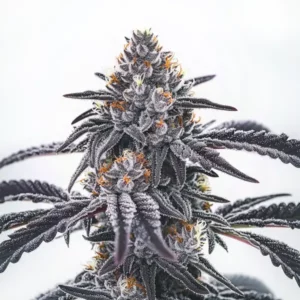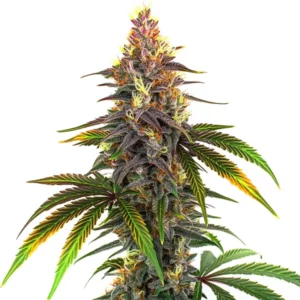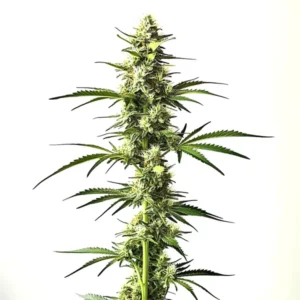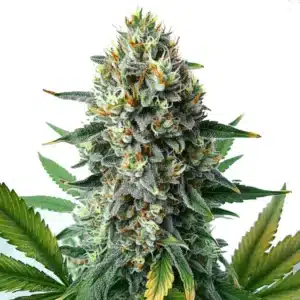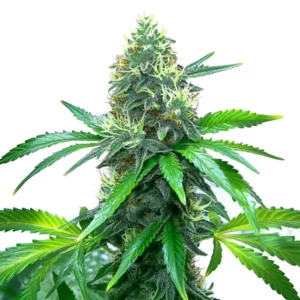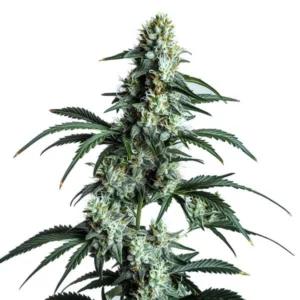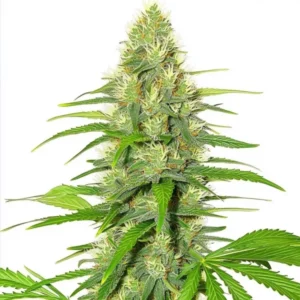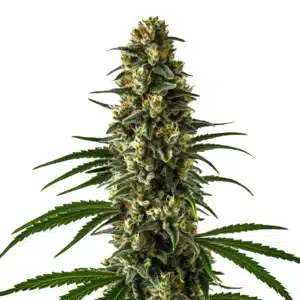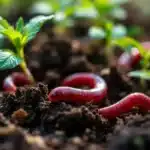
Molybdenum in Plants Cannabis: Why It Matters
Molybdenum might sound like a mouthful, but molybdenum in plants cannabis is a crucial nutrient for healthy growth. It plays a vital role in the development of your favorite strains by helping convert nitrates into ammonia, a process essential for protein synthesis. Without adequate molybdenum, your plants might face serious challenges, as this trace mineral is key for healthy plant metabolism and overall vitality.
Imagine growing a strain like OG Kush without enough molybdenum. The leaves might turn yellow, and growth could stall. That’s because molybdenum deficiency in cannabis plants impacts their ability to process nutrients efficiently. Fortunately, knowing how to spot and address this issue can make all the difference.
Recommended Strains
Glookies
-
THC: 22% - 25%
-
Type of seed: Feminized
-
Phenotype: 30% Sativa / 70% Indica
-
Flavor: Diesel, Lime
-
Day to flower: 8 - 10 weeks
Frosty Blue OG
-
THC: 18% - 20%
-
Type of seed: Feminized
-
Phenotype: 40% Sativa / 60% Indica
-
Flavor: Cheese, Fruity, Pine
-
Day to flower: 10 - 12 weeks
Don’t let molybdenum slip under the radar. It’s a tiny element but has a big impact on the success of your cannabis cultivation. Whether you’re a first-time buyer or a seasoned grower, knowing molybdenum nutrient requirements for cannabis can improve your yield and plant health significantly.
Symptoms of Molybdenum Deficiency in Cannabis
Spotting molybdenum deficiency in cannabis plants early can save you a lot of headaches. One of the most noticeable symptoms is the yellowing of older leaves. This happens because the plant struggles to process nutrients effectively. As a result, it cannot support healthy growth.
Another sign to watch for is stunted growth. Your plants may seem to be stuck in a growth phase and not reaching their full potential. If you’re growing a strain like Sour Diesel, you’ll want it to thrive and reach its iconic height and structure. Recognizing these symptoms in time can help you take corrective action before it’s too late.
Besides to yellowing and stunted growth, you might notice necrotic spots appearing on the leaves. This indicates that the plant is severely struggling with molybdenum deficiency in cannabis plants, and urgent intervention is required. Addressing these symptoms swiftly ensures the vitality and productivity of your crops.
Knowing the relationship between molybdenum and nitrogen is crucial. Since molybdenum helps convert nitrates into usable forms, a lack of it can lead to a nitrogen imbalance, further exacerbating deficiency symptoms. This highlights the necessity of regular monitoring and intervention.
How to Identify Molybdenum Deficiency
Look for yellowing between the veins on leaves, a condition known as interveinal chlorosis. This is a classic symptom of molybdenum deficiency. It usually starts with older leaves and can move to younger ones if not addressed.
Next, pay attention to how your plants are growing. If they’re not growing as fast as they should, molybdenum could be the missing link. Regular monitoring of plant health can help you catch these issues early.
Another key indicator to watch for is the development of twisted or misshaped leaves. This can occur when the plant’s metabolic processes are hindered due to insufficient molybdenum in plants cannabis, affecting overall plant structure.
It’s also important to consider environmental factors that might exacerbate symptoms of molybdenum deficiency in cannabis. Poor soil quality or improper pH levels can magnify nutrient uptake issues, making it crucial to manage these conditions alongside supplementation.
Promos & Deals
Function of Molybdenum in Cannabis Cultivation
Molybdenum plays a crucial role in cannabis cultivation, particularly in nitrogen metabolism. It helps convert nitrates into ammonia, an essential step for protein development. Without this conversion, plants cannot synthesize amino acids effectively.
Another important aspect is its function in enzyme systems. Molybdenum is a part of key enzymes that drive metabolic reactions in the plant. This means it indirectly affects everything from leaf growth to flower development. Ensuring your cannabis plants have enough molybdenum is vital for maximizing their potential.
The function of molybdenum in cannabis cultivation extends to enhancing overall plant resilience. Adequate molybdenum levels can bolster the plant’s ability to withstand environmental stressors, making it a key component in sustainable cultivation practices.
Moreover, molybdenum nutrient requirements for cannabis are closely linked to pH levels in the growing medium. Ensuring an optimal pH range can enhance molybdenum availability, allowing plants to efficiently utilize this critical nutrient for their growth and development.
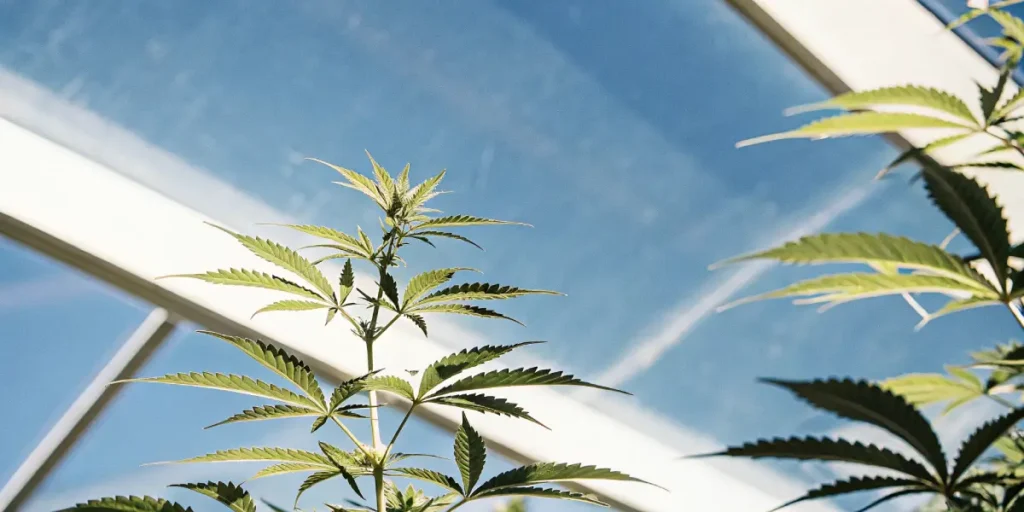
Ensuring Adequate Molybdenum Levels
To meet molybdenum nutrient requirements for cannabis, regular soil testing is recommended. This will help determine if your plants are receiving adequate levels of this trace mineral. Soil amendments and fertilizers can be adjusted accordingly.
Consider using supplements specifically designed to address molybdenum deficiency. These can be crucial when growing strains known for high yields, ensuring they reach their full potential. Always follow the manufacturer’s guidelines for dosing to avoid over-supplementation.
Incorporating organic matter into the soil can also enhance molybdenum availability. Organic amendments improve soil structure and nutrient-holding capacity, creating an optimal environment for molybdenum uptake.
It’s also beneficial to rotate different nutrient strategies to avoid dependency on a single method. This diversified approach can help manage molybdenum levels effectively, ensuring consistent availability for various cannabis strains.
How to Supplement Molybdenum in Cannabis Plants
Supplementing molybdenum in cannabis plants can be straightforward. Start by choosing a fertilizer that includes trace minerals, ensuring molybdenum is one of them. This can help maintain a balanced nutrient profile.
Another method is using foliar sprays. These can be effective for quick absorption and immediate results. Foliar sprays are particularly useful if you notice symptoms of molybdenum deficiency, as they can quickly correct the issue.
Ensuring the right concentration in foliar applications is key. Too much can cause leaf burn, while too little might not address the deficiency. Careful measurement and application help achieve the desired outcomes.
Soil drenches can also be an effective way to supplement molybdenum in plants cannabis. This method allows for a more gradual uptake, reducing the risk of sudden nutrient imbalances and supporting long-term health.
Practical Tips for Supplementation
Always start with a soil test before adding any supplements. This helps to identify the specific needs of your plants and prevent over-supplementation. Overdoing it can lead to nutrient lockout, which can be counterproductive.
Be cautious with dosage. More isn’t always better. Follow the instructions on your chosen product closely. Consistent monitoring will let you know if adjustments are necessary.
Tailoring the supplementation approach to your specific growing conditions is vital. Consider factors such as climate, soil type, and water quality, which can all influence molybdenum availability.
Regularly evaluating plant health and growth patterns will provide insights into the effectiveness of your supplementation strategy. Adjusting based on observed outcomes ensures optimal nutrient management practices.
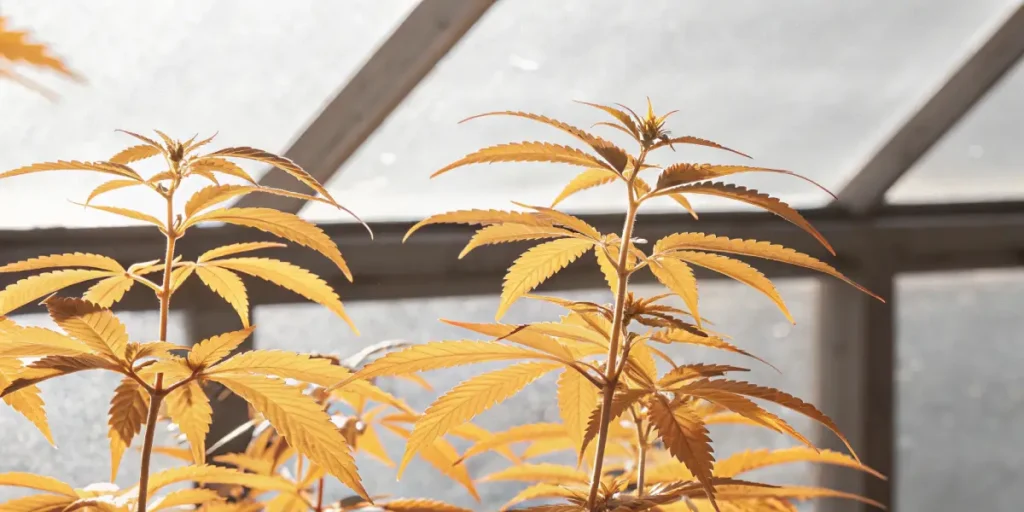
FAQs: Molybdenum in Cannabis Cultivation
What is molybdenum’s role in cannabis plants?
Molybdenum is a trace mineral that plays a key role in nitrogen metabolism. It helps convert nitrates into ammonia, allowing plants to synthesize proteins effectively. This process is essential for the overall growth and health of cannabis plants, impacting everything from leaf development to flowering.
Without sufficient molybdenum, plants struggle to process nutrients, leading to stunted growth and other deficiency symptoms. Ensuring adequate levels of this nutrient is crucial for maximizing the potential of your cannabis cultivation.
Beyond nitrogen metabolism, molybdenum in plants cannabis also influences enzyme activity. These enzymes catalyze various biochemical reactions, ensuring that essential processes like photosynthesis and respiration occur efficiently.
Knowing the function of molybdenum in cannabis cultivation is essential for growers aiming to optimize their crops. A well-balanced nutrient regime incorporating molybdenum can lead to healthier, more productive plants.
How can I identify molybdenum deficiency in my cannabis plants?
One of the first signs of molybdenum deficiency in cannabis plants is the yellowing of older leaves, known as chlorosis. This occurs because the plant is unable to process nutrients effectively. Stunted growth and leaf curling are other symptoms to watch for.
Regular monitoring and soil testing can help in identifying these issues early. By catching these symptoms promptly, you can take corrective action to restore nutrient balance and promote healthy plant growth.
Visual inspections should be complemented with soil and tissue analyses. These tests provide a more comprehensive knowing of molybdenum levels and help tailor your approach to addressing deficiencies.
Environmental stressors such as excessive heat or drought can exacerbate symptoms of molybdenum deficiency, making it essential to manage growing conditions alongside nutrient supplementation.
How do I supplement molybdenum in cannabis plants?
Supplementing molybdenum can be achieved through the use of fertilizers containing trace minerals. Foliar sprays are another effective method for quick absorption, especially if deficiency symptoms are present.
Always start with a soil test to determine the nutrient needs of your plants. Follow the manufacturer’s guidelines for dosing to avoid over-supplementation, which can lead to other nutrient imbalances.
When using fertilizers, look for those specifically formulated for cannabis, as they often include the right balance of trace elements, including molybdenum, tailored to the plant’s needs.
Ensuring a balanced approach by integrating both soil and foliar applications can provide a comprehensive solution to molybdenum deficiency in cannabis plants, optimizing overall plant health.
Are there specific strains that are more susceptible to molybdenum deficiency?
While all cannabis strains require molybdenum, some may show symptoms of deficiency more readily. Strains known for rapid growth or high yields, such as Sour Diesel and White Widow, might require closer attention to nutrient management.
Experimenting with different strains can help identify those that thrive best under your specific growing conditions. Tailoring your nutrient approach to each strain can optimize their growth and yield potential.
Genetic predispositions in certain strains may make them more sensitive to nutrient imbalances, including molybdenum deficiency. Knowing these traits can guide targeted nutrient interventions.
Adapting your cultivation techniques to the specific molybdenum nutrient requirements for cannabis strains can lead to more robust growth, ensuring that each strain reaches its full potential.
Can I use too much molybdenum in cannabis cultivation?
Yes, over-supplementing with molybdenum can lead to nutrient lockout, where the plant is unable to absorb other essential nutrients. This can cause additional growth issues and negate the benefits you aim to achieve.
It’s important to balance molybdenum supplementation with other nutrients. Follow product guidelines and consider consulting with a horticultural expert if you’re uncertain about the appropriate levels for your plants.
Excessive molybdenum can also alter soil chemistry, impacting the availability of other trace elements. Maintaining a balanced nutrient profile is crucial for overall plant health.
Monitoring plant responses to supplementation provides insights into nutrient dynamics, helping to fine-tune your approach and prevent over-application of molybdenum in plants cannabis.


